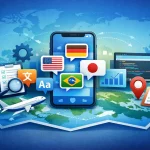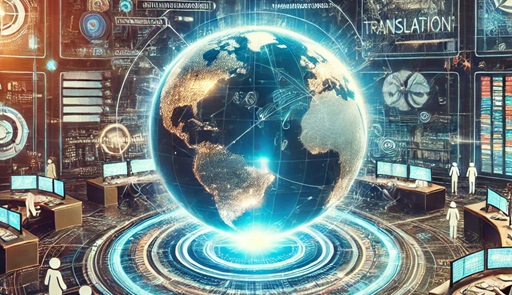ChatGPT has the potential to translate simple conversations, which are, as such, required for interpersonal communications. However, the effectiveness of ChatGPT translation may differ from the quality of professional human translators. It is suitable only for general texts and rarely for highly specialized texts or for reading nuanced literature.
The depth of accuracy in translation is relatively high, though not free from fluctuation based on context or the two languages being translated from and to. It also performs exceptionally in basic history languages such as Spanish, French, and German and provides cookies in a clear and accurate manner for regular text.
For general use, ChatGPT offers good translation quality in many instances, though it may not be optimal to translate documents that require special attention to nuance or domain-specific vocabulary. ChatGPT is beneficial for most-purpose translations, but it is best to conduct a final proofread, especially when accuracy matters in an official setting.
Comparing ChatGPT’s Translations with Human Translators
It is true that while using the ChatGPT language translation function, the advancements that have been achieved have been profound in aspects such as speed and access. An important feature is the typing of the text, a possible translation of which is possible in many languages; this would be very useful if you need translations at the moment, for example, in chats or forums.
Obviously, the knowledge of context, idioms, and cultural differences is also weaker than that of real translators in ChatGPT. Human translators, outperforming the machine’s aspects, are capable of understanding the subtle connotations, cultural settings, and proverbs that can be expressed in one language but may not have an equivalent in other languages. Culturally aware and contextually sensitive translation can only be realized through the expertise held by human translators.
Furthermore, human translators perform better in translating a given text based on regional languages, tendencies, variations in language and even cultural and political circumstances in a given area. This kind of specificity and care in translating or interpreting is not currently feasible for AI language translation applications like ChatGPT.
The Technology behind ChatGPT’s Translation Abilities
ChatGPT differs from Google Translate in its foundational technology. While Google Translate is based on statistical methods that analyze large datasets to understand context, ChatGPT utilizes advanced deep learning models known as transformers. These models allow ChatGPT to interpret and translate text in a more human-like manner, focusing on overall meaning rather than literal, word-for-word translation. This approach often results in translations that are more fluid and contextually accurate than those produced by Google Translate.
Experts argue that despite the advancements in AI translation technologies like ChatGPT, human translators still play a crucial role. Humans are better at grasping subtleties such as cultural references and idiomatic expressions, which are essential for translations that are not only accurate but also resonate culturally. Therefore, while ChatGPT can serve as an efficient tool for general translations, it is not always sufficient for tasks that require deep cultural sensitivity.
Overall, ChatGPT’s strength lies in its ability to handle and produce language effectively, making it a robust tool for automatic translations. However, it is important to recognize that in complex scenarios that require nuanced understanding, human translators maintain a significant advantage.
Limitations and Challenges in ChatGPT’s Translations
The potential challenges that ChatGPT can face when translating include the variations between different languages and the inexpressiveness of technical terms and context. Hyphenated compounds or phrases, such as idioms, colloquial expressions, and cultural references, are always tricky because their meanings are not always equivalent to the source language.
In technical writing, terms may be specific to some technical fields, such as law or medicine, and word choice needs extra consideration to avoid misconstruing information. Closeness adds another layer to the problem, as it provides ordinary words with different meanings depending on context, tone, or purpose.
How ChatGPT Stands Against Professional Translation Services
Before analyzing the benefits gained with the help of professional translation services over ChatGPT in distinct areas, professional/human translators translate with the consideration of the language idioms and cultural requirements that are hard for applications built-in AI to recognize and follow. This allows them to correctly translate the meaning, the tenor or tenor and the style of the whole text and every part of it, besides making it read and flow as intended.
Moreover, human translators can effectively deal with idioms, which can be tough even for the best AI models to translate to the appropriate sense. For contracts, ads, or writing, it’s super important to use professional translators. This helps avoid mistakes and keeps the work effective and trustworthy.
Future Prospects of AI in Translation
In the years to come, people expect that such features of artificial intelligence, particularly translation, will revolutionize global communication. These tools will provide fast and accurate translation processes, given the capabilities integrated into ChatGPT, allowing enterprises to connect with foreign markets without much hassle. Machine capabilities in natural language processing will force translated AI prose to reach parity with human translations across economic verticals from e-commerce to health and diplomacy.
The above developments will not only tear down barriers in communication but also facilitate shared cultural interaction and recognition. Moreover, the role of AI-based translations will help global teams unite and work more effectively as translation will be performed faster and in real-time, which creates more opportunities for inventions.
Conclusion
The rise of machine translation has received its biggest boost in the world of global communication. Its advancements depict AI in identifying the barriers to language translation one is likely to come across. As not perfect, such tools represent an enormous promise in promoting a universally teaming environment, bridging languages and generating the interconnectivity of the world.
Subtitles

Professional and Accurate Subtitle Services for your Videos.
- Video subtitles specifically tailor-made for improving accessibility.
- Using highly experienced subtitlers with years of industry experience.
- Professionally written and expertly timed.
Translation

We help the world’s top companies translate their content in over 73 languages!
- We localize content for internet websites, games, travel, cryptocurrencies, and more
- Expand your global audience by adding different languages.
- We work only with qualified translators and experienced content creators
Audio translation

Ensuring full accessibility for Blind and visual impaired audiences.
- Visual descriptive events as they occur in the video.
- Working with top audio describers to perfectly describe what is happening on-screen
- Professional sound recording.














